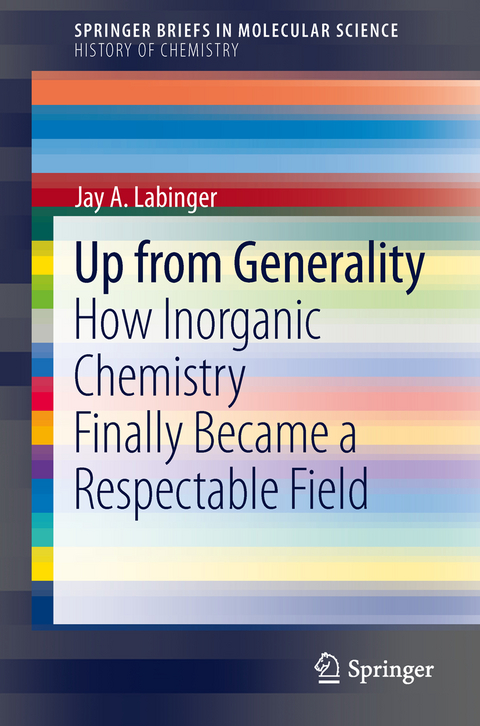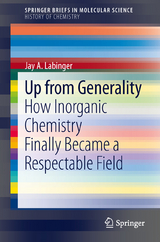Up from Generality
Springer Berlin (Verlag)
978-3-642-40119-0 (ISBN)
Jay Labinger is a California native, born in Los Angeles in 1947. He was an undergraduate at Harvey Mudd College, and received his Ph.D. (in inorganic chemistry,of course) at Harvard University in 1974. After a postdoctoral stint at PrincetonUniversity, he held successive positions in academia (University of Notre Dame) and industry (Occidental Petroleum, ARCO) before coming to Caltech in 1986, where he is Administrator of the Beckman Institute and Faculty Associate in Chemistry. His chemistry research has been focused in the areas of organotransition metal chemistry and energy-related catalysis. Many of his contributions have taken the form of mechanistic explanation of transformations that are potentially valuable in the energy sphere; these include oxidative coupling of methane, selective oxidation of alkanes by soluble metal complexes, and conversion of methanol to a high-octane hydrocarbon. He was elected Fellow of the American Association for the Advancement of Science in 2009. For the last twenty years or so, he has also been active in scholarship on the borders between science and the humanities, writing on topics such as science and literature, controversial episodes in the history of chemistry, and the "Science Wars." He co-edited (with Harry Collins) the book The One Culture (2001), a conversation-in-print between scientists and scholars of science. He is a past president of the Society for Literature, Science and the Arts. The One Culture (2001), a conversation-in-print between scientists and scholars of science. He is a past president of the Society for Literature, Science and the Arts.
From the Contents: False Labor: Inorganic Chemistry in the Late 19th -early 20th Centuries.- The (Re)birth of Inorganic Chemistry.- The Personal Factor: Donald Yost and Inorganic Chemistry at Caltech.- Agents of Respectability.
From the reviews:
"The book contains many illustrations of inorganic chemists and is fully referenced ... . Summing Up: Recommended. ... upper-division undergraduates and above." (H. Goldwhite, Choice, Vol. 51 (8), April, 2014)
| Erscheint lt. Verlag | 24.9.2013 |
|---|---|
| Reihe/Serie | History of Chemistry | SpringerBriefs in Molecular Science |
| Zusatzinfo | IX, 77 p. 30 illus. |
| Verlagsort | Berlin |
| Sprache | englisch |
| Maße | 155 x 235 mm |
| Gewicht | 150 g |
| Themenwelt | Geisteswissenschaften ► Geschichte |
| Naturwissenschaften ► Chemie ► Anorganische Chemie | |
| Schlagworte | American Inorganic Chemists • Chemistry at Caltech • Chemistry in US Academia • Discipline Formation • Donald Yost • History of Chemistry • Inorganic Chemistry • Mechanism in Chemistry • Organometallic Chemistry |
| ISBN-10 | 3-642-40119-8 / 3642401198 |
| ISBN-13 | 978-3-642-40119-0 / 9783642401190 |
| Zustand | Neuware |
| Haben Sie eine Frage zum Produkt? |
aus dem Bereich




